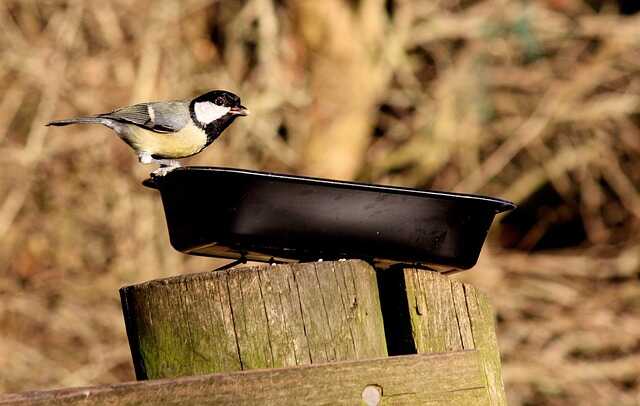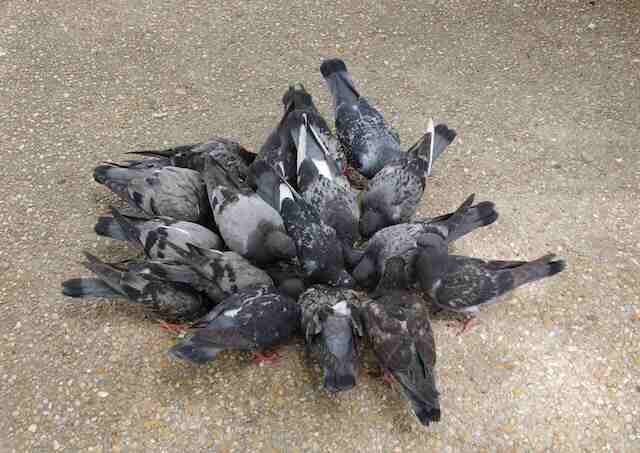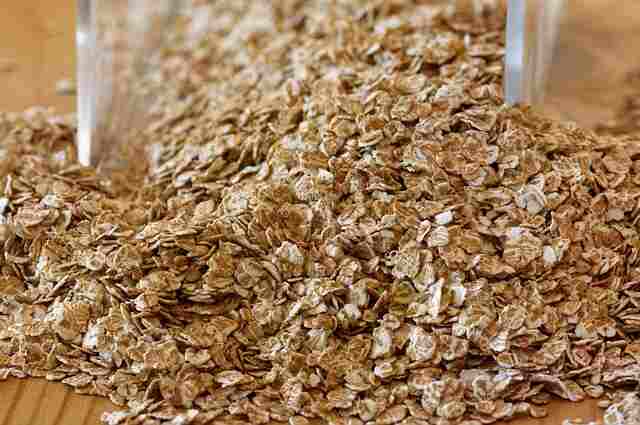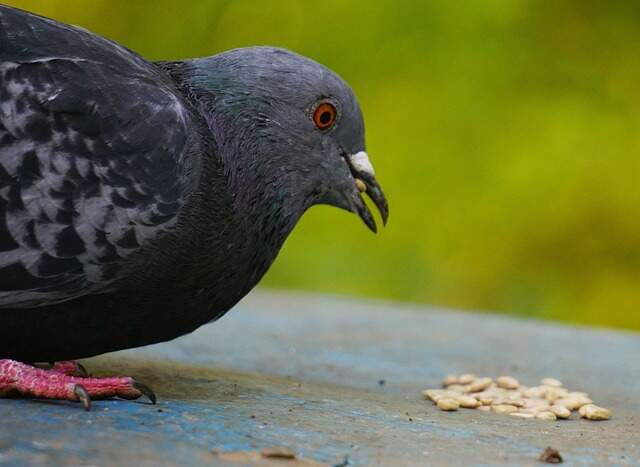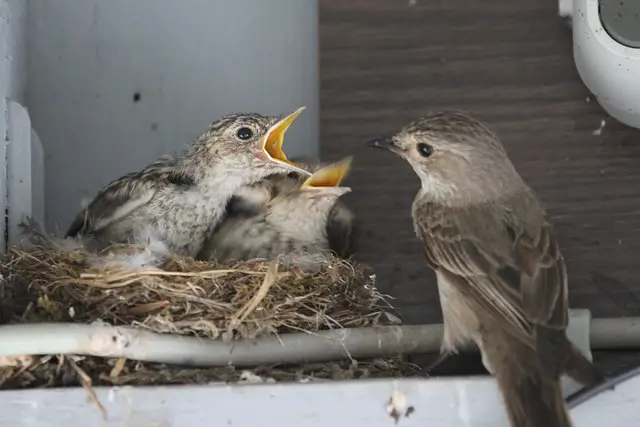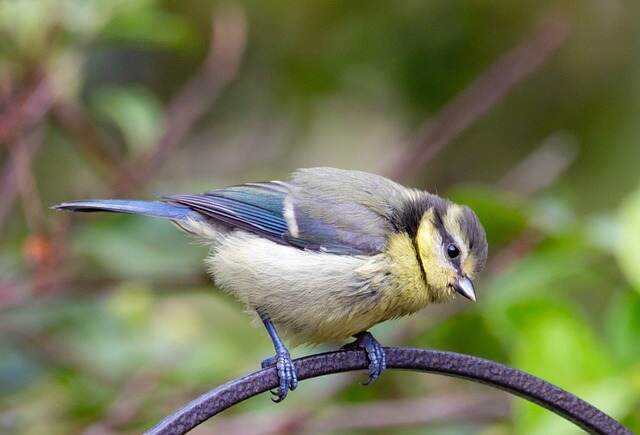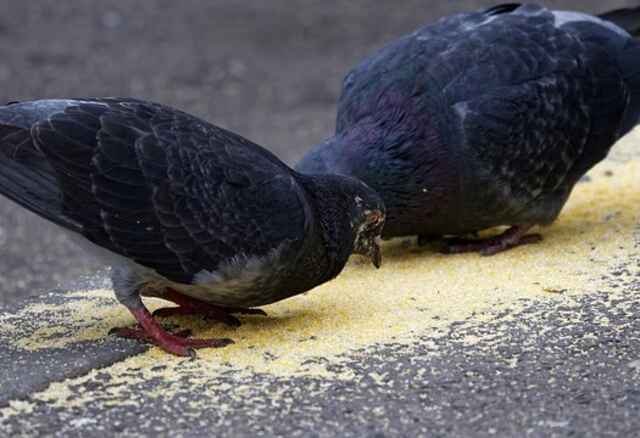You might be wondering, can birds eat cereal? The answer is yes, but with some important guidelines. Many birds enjoy plain, unsweetened cereals, but it’s important to avoid those with added sugars, preservatives, or artificial ingredients. In moderation, cereal can be a tasty treat, but it shouldn’t be the main part of their diet. In this article, we’ll explore the best types of cereal for birds and how to feed them safely.
Table of Contents
- 1 Can birds eat cereal?
- 2 What types of cereal can birds eat?
- 3 Is cereal bad for birds?
- 4 Can birds eat cereal with sugar?
- 5 Can birds eat all-bran cereal?
- 6 Can birds eat cereal crumbs?
- 7 Can birds have breakfast cereal?
- 8 Can birds eat Special K cereal?
- 9 Can birds eat Rice Krispies cereal?
- 10 Can I put Rice Krispies in a bird feeder?
- 11 Can birds eat Rice Krispies Treats?
- 12 Can birds eat Cheerios?
- 13 Can birds eat Chex cereal?
- 14 Can birds eat Shredded Wheat cereal?
- 15 Can birds eat Bran Flakes cereal?
- 16 Can birds eat Cream of Wheat cereal?
- 17 Can birds eat Honey Nut Cheerios cereal?
- 18 Can birds eat Grape Nuts cereal?
- 19 Can birds eat Honey Bunches of Oats?
- 20 What are the benefits of feeding cereal to birds?
- 21 How much cereal can I feed to birds?
- 22 Are there any risks associated with feeding cereal to birds?
- 23 Can I feed homemade bird feed that contains cereal?
- 24 How can I tell if a cereal is good for birds?
- 25 Can I feed cereal to baby birds?
- 26 Can wild birds eat cereal?
- 27 Can wild birds eat cinnamon cereal?
- 28 Can wild birds eat breakfast cereal?
- 29 What cereals can wild birds eat?
- 30 Is it safe to feed birds cereal with added sugar?
- 31 Can I mix cereal with other types of birdseed?
- 32 Can cereal attract unwanted animals to my backyard?
- 33 How can I best offer cereal to birds in my backyard?
- 34 Are there any specific types of cereal that are better for birds than others?
- 35 Can I offer cereal to birds in the winter or only in the summer?
- 36 What are the long-term effects of feeding cereal to birds?
- 37 Can I use cereal as a main source of food for birds, or should it be used as a supplement?
- 38 What is the best way to store cereal if I want to offer it to birds later?
- 39 Can all bird species eat cereal, or are there certain species that should not be fed cereal?
- 40 Does cereal spoil quickly when left outside for birds to eat?
- 41 Are there any recipes or methods to make homemade bird feed with cereal?
- 42 Are there any alternative to cereal that can be used to attract birds to the backyard?
- 43 How to make sure the cereal offered to birds is safe to eat?
- 44 What are the effects of feeding cereal to different type of birds, migratory and resident?
- 45 Author
Can birds eat cereal?
Yes, birds can eat cereal, but it’s crucial to be mindful of what type you’re offering them. While plain oats and rice-based cereals are safe, cereals that contain chocolate, nuts, or added sugar should be avoided, as they can be harmful to birds. Be cautious of cereals with artificial colors, flavors, or small pieces that may pose a choking hazard or get stuck in the bird’s crop.
Opting for natural, whole-grain options like plain oats is always the safest choice. These cereals provide a healthy and enjoyable snack without the risks associated with processed ingredients.
Remember, moderation is key. Too much processed food can lead to obesity and malnutrition, so it’s important to keep an eye on the variety and quantity in your bird’s diet. Your feathered friends will thank you for the healthy treat!
What types of cereal can birds eat?
Cereal can be a great option for feeding birds, but it’s important to choose the right types. Avoid cereals with high sugar or salt content, as these can be harmful to birds’ health. For instance, sugary cereals like Frosted Flakes or Cinnamon Toast Crunch should be avoided.
Instead, opt for unsweetened, whole-grain cereals such as Kellogg’s Rice Krispies, General Mills Cheerios, Kellogg’s Corn Flakes, Springfield Corn Flakes, shredded wheat, bran flakes, rolled oats, and plain granola (without added sugars or fruits). These cereals are better for birds and provide them with a tasty, low-sugar treat.
As with all foods, it’s essential to offer cereal in moderation and as an occasional snack. Serve it in small amounts alongside other nutritious foods, like seeds or pellets, to ensure your feathered friends get a well-balanced diet while enjoying a yummy treat!
Is cereal bad for birds?
Many people wonder if cereal is bad for birds. The good news is that many types of cereal can actually be beneficial for them! Options like bran flakes, toasted oats, plain Cheerios, corn flakes, and other plain cereals with fruit and nuts can be a nutritious addition to a bird’s diet.
However, if you’re feeding these cereals, make sure to crush the pieces into smaller bits so the bird can easily swallow them without any trouble.
On the other hand, you should avoid feeding sugar-coated cereals or cereals with added marshmallows. These often contain excessive amounts of sugar, which can lead to health issues for birds. So, while many types of cereal are safe and healthy for birds in moderation, it’s essential to be mindful of what’s inside the cereal you’re offering!
Can birds eat cereal with sugar?
While birds can technically eat cereal with sugar, it’s not recommended. Sugar offers no nutritional value to birds and can lead to a variety of health problems over time. Additionally, sugar can cause behavioral issues such as aggression or anxiety due to its stimulating effects.
Furthermore, sugar is difficult for birds to digest, which can lead to digestive issues such as vomiting, diarrhea, and lethargy. Even small amounts of sugary cereal given occasionally can still cause harm in the long term.
For these reasons, it’s best to avoid giving your bird any sugary cereals. Instead, there are plenty of nutritious alternatives that will keep them healthy and happy!
Can birds eat all-bran cereal?
Birds can eat all-bran cereal, but it’s not the best option. All-bran provides a concentrated source of fiber, which can aid digestion and promote overall health in birds. However, many all-bran cereals contain added sugars and preservatives, which should be avoided.
If you do decide to offer all-bran cereal, do so sparingly as an occasional treat. Be sure to avoid sugary or marshmallow-filled cereals, as these can contribute to obesity and other health issues.
Additionally, since all-bran is high in fiber, make sure your bird has access to plenty of fresh water to prevent constipation.
Can birds eat cereal crumbs?
Yes, birds can eat cereal crumbs, as long as they are free of added sugars and preservatives. Many cereals are made with grains, which provide an excellent source of nutrition for birds. Cereal crumbs can help birds obtain essential proteins, carbohydrates, vitamins, and minerals that are necessary for their diet.
In addition to the nutritional benefits, cereal crumbs can also serve as a source of entertainment for birds, as they enjoy pecking and digging at their food.
When feeding cereal crumbs to birds, be sure to choose varieties that don’t contain harmful additives like sugar, salt, or preservatives. These ingredients can be harmful if consumed. Avoid sugary cereals, as well as those containing chocolate or candy pieces. Offer cereal crumbs in moderation to prevent overindulgence, which could lead to weight gain.
Can birds have breakfast cereal?
Birds can eat plain breakfast cereals, such as corn flakes and oatmeal. However, it’s essential to avoid cereals that are sweetened or flavored with artificial additives.
Sweetened cereals are high in sugar and preservatives, both of which are unhealthy for birds. Instead, opt for plain cereals, or consider making your own bird food mix with healthy grains like millet or wheat. Whole-grain breads and crackers can also be a good choice.
When offering dry foods to birds, always ensure fresh water is available so they can stay hydrated while eating.
Can birds eat Special K cereal?
Although birds can technically eat Special K cereal, it is not an ideal food for them. Special K contains sugar, processed grains, and preservatives, which are not suited to a bird’s delicate digestive system.
Birds, especially small ones, may have difficulty digesting these processed ingredients. Over time, feeding birds too much processed food can lead to obesity or other health issues.
Even when given as an occasional treat, Special K could cause problems for your bird in the long run. It’s best to avoid feeding your pet bird Special K or any other processed cereals.
Can birds eat Rice Krispies cereal?
Yes, birds can eat Rice Krispies cereal, though it should only be given as an occasional treat. While Rice Krispies are not a natural food for birds, they are safe to feed in small amounts.
The tiny rice pieces offer carbohydrates and a quick energy boost. However, because of their sugar content, it’s important to mix Rice Krispies with other healthy food options like fruits and vegetables to provide a more balanced diet.
Remember to remove any uneaten treats to prevent them from spoiling or becoming moldy. As long as they’re fed in moderation, Rice Krispies can be a fun and tasty snack for your birds.
Can I put Rice Krispies in a bird feeder?
It’s not recommended to put Rice Krispies in a bird feeder. While they may seem like a fun snack, Rice Krispies lack the necessary nutritional value birds need to thrive. They’re primarily made of puffed rice, sugar, and marshmallow, which don’t provide the essential nutrients birds rely on.
Moreover, Rice Krispies could attract rodents and pests due to their sweetness. Since birds generally prefer seed-based diets and insects, offering Rice Krispies may actually discourage them from eating healthier food sources.
If you want to attract birds to your feeder, it’s better to offer nutritious options like wild bird seed mixes, fruits, and vegetables instead.
Can birds eat Rice Krispies Treats?
Rice Krispies Treats are not recommended for birds due to their high sugar, salt, and marshmallow content. The marshmallows, in particular, can be hard for birds to digest. A healthier alternative is plain Rice Krispies cereal, which has lower sugar and no marshmallows.
While Rice Krispies cereal is low in calories and rich in carbohydrates, it lacks the essential proteins and vitamins that birds need for optimal health. Therefore, it should only be given occasionally as a supplement to their regular diet.
For a better snack option, try offering fresh fruits, vegetables, nuts, grains, or specially-formulated bird seed mixes. Always check the ingredients before giving your bird any treats to ensure they are safe and nutritious.
Can birds eat Cheerios?
Cheerios and other small whole-grain cereals can be a great option for many birds. They are low in fat and sodium, high in carbohydrates, and provide essential vitamins and minerals that help support birds’ energy needs. The crunchy texture also makes Cheerios particularly appealing to small birds like finches and parakeets.
Allowing birds to forage for their food provides an enriching experience that helps stimulate their mental development. However, it’s important to offer Cheerios in moderation, as too many can lead to health problems or obesity. Ensure that they are part of a well-balanced diet.
Can birds eat Chex cereal?
Yes, birds can eat Chex cereal, but it should be given in moderation. While plain corn or wheat Chex is safe, it may not provide enough nutrients on its own. To enhance the nutritional value, mix it with other healthy bird treats such as chopped fruits (apples, carrots, spinach), vegetables, nuts, seeds, and even cooked beans or scrambled eggs.
Avoid offering sugary or salty cereals, as these can be harmful to your bird’s health. With a well-rounded mix of Chex and other nutritious foods, your bird will enjoy a balanced diet and stay healthy.
Can birds eat Shredded Wheat cereal?
Yes, birds can eat unsweetened Shredded Wheat cereal! It is a healthy, low-fat, and low-calorie option filled with essential vitamins and minerals like vitamin B, iron, phosphorus, and magnesium. The texture also makes it easy for birds to eat.
Be sure to crumble the Shredded Wheat into smaller pieces to make it easier for your bird to digest. Additionally, offering fresh fruits or vegetables alongside the cereal will provide your bird with a variety of nutrients for optimal health.
Can birds eat Bran Flakes cereal?
Bran flakes are a good choice for birds, as they are high in fiber and packed with essential vitamins and minerals. The fiber helps maintain a healthy digestive system.
Be cautious to avoid bran flakes with added sugars or marshmallows. Bran flakes should not be the main food source for birds but can be given occasionally as part of a balanced diet. Birds should still receive a variety of fresh fruits and vegetables to meet their nutritional needs.
Can birds eat Cream of Wheat cereal?
Birds can technically eat Cream of Wheat and farina cereals, but it should be done in moderation. While there are no major health concerns with these products, they typically don’t provide the necessary nutrition that birds need, so any cream of wheat cereal should only be given as an occasional treat.
Additionally, those that contain added iron may not be suitable for more sensitive species like Mynas, Lorikeets, and Toucans due to the high levels found in the cereal. To keep your bird healthy, give them plenty of fresh fruits and vegetables along with other fortified birdseed blends to ensure optimal nutrition.
Can birds eat Honey Nut Cheerios cereal?
Birds can eat Honey Nut Cheerios cereal, but it’s not recommended. Despite being tasty, the high sugar content in these particular cheerios can be fatal for birds if fed. Low-sugar and low-sodium cereals such as plain Cheerios are much healthier substitutes for our feathered friends.
Too much sugar and sodium can cause health issues such as heart problems, diabetes, and kidney failure. If you’re looking to feed your bird some cereal, try staying away from the sugary varieties and opt instead for a more natural option that is free of unnecessary ingredients like sugar or salt.
Can birds eat Grape Nuts cereal?
Birds can technically eat Grape Nuts cereal, but it is not necessarily recommended. The hard cereal pieces can make it difficult for birds to digest and could lead to an intestinal blockage if consumed in large amounts. Additionally, the high amount of sugar and salt in Grape Nuts may be detrimental to a bird’s health, as too much sodium can cause dehydration or electrolyte imbalance.
It is best to provide birds with nutrient-rich foods such as seeds, nuts, fruits, and vegetables rather than cereals like Grape Nuts. Despite this advice, occasional snacks of Grape Nuts are unlikely to cause any major harm to your feathered friend.
Can birds eat Honey Bunches of Oats?
Although Honey Bunches of Oats may sound like a tasty treat for birds, it is best to avoid feeding this cereal to them. This is because the cereal contains high levels of sugar and honey, which are not great for bird health.
Sugar can be bad for birds if eaten in too large quantities, as it can cause weight gain and even organ damage over time.
Additionally, honey-based cereals could contain bacteria or fungal spores that are harmful to birds. As such, it’s best to look into alternative options when trying to feed your feathered friends.
What are the benefits of feeding cereal to birds?
Feeding cereal to birds is a great way to supplement their diet. Cereal provides essential vitamins, minerals and energy that birds need to stay healthy. It’s also an economical choice, as most types of cereal are inexpensive and come in large quantities. Plus, it can be an easy-to-prepare treat for your feathered friends!
Just make sure to never feed them cereal with added sugar, salt, marshmallows, flavoring or any other additives—these ingredients can be hazardous to birds’ health and even prove lethal in some cases. Choose natural cereals like oats, rice or corn instead and you’ll be sure to keep your birds safe and satisfied.
How much cereal can I feed to birds?
Birds love cereal, but it should not be their main source of food. To keep birds healthy and safe, you should only give them small amounts of cereal as a treat. Cereal can provide birds with essential vitamins and minerals, but too much can cause problems with their digestive system.
As a general rule, limit the amount of cereal to no more than one tablespoon per bird per day. Too much cereal will make birds overweight and could lead to health issues like diabetes or heart disease.
You also need to take into account other foods that your birds are eating. If they’re already eating a balanced diet, then there’s really no need to add extra cereal at all. Ultimately, feeding birds is meant to be fun, but make sure you don’t overdo it!
Are there any risks associated with feeding cereal to birds?
Feeding cereal to birds can have some potential risks associated with it. Cereal contains a high amount of sugar, carbohydrates, and salt, which can lead to obesity in birds if consumed in large quantities.
Furthermore, the types of cereals that are most commonly purchased contain artificial food dyes, which may be toxic to avian physiology. Additionally, many cereals also contain added flavorings or preservatives that could be potentially harmful for bird consumption.
It’s best to avoid feeding any kind of cereal directly to your pet bird and instead opt for other healthier grain-free options such as millet or oats. Any unusual behavior from your pet bird should immediately be reported to a veterinarian for further inspection.
Can I feed homemade bird feed that contains cereal?
It is possible to feed homemade bird feed containing cereal. However, it is important to make sure that the cereal used is not too high in sugar, salt or fat and that any human-grade ingredients are safe for birds. Additionally, you should only use cereals that are specifically designed to be eaten by birds.
Feeding certain types of cereals may introduce hazardous elements into your backyard bird environment, such as pests and unhealthy foods. Therefore, it is best to consult with a vet or a local bird expert before making homemade bird feed with cereal.
How can I tell if a cereal is good for birds?
When selecting a cereal for your backyard birds, you want to make sure it is healthy and nutritious. The best way to tell if a cereal is good for birds is to read the ingredients listed on the packaging. Look for high-quality, natural ingredients like cracked or whole grains, nuts, seeds, and dried fruit.
Avoid cereals containing artificial flavors, preservatives and added sugar as these can be harmful to birds. Additionally, avoid cereals made up of mostly puffed rice or other processed grains as these provide little nutritional value.
To ensure that your feathered friends are getting all the essential nutrients they need, opt for fortified cereals designed specifically for birds. These often include vitamins, minerals and amino acids which help them maintain good health and energy levels.
Can I feed cereal to baby birds?
It is not recommended to feed baby birds cereal as a regular part of their diet. Baby birds need specialized diets that provide them with the protein, carbohydrates, fats and vitamins necessary for their growth and development. Cereal does not have the same nutrition content or caloric density as bird food specifically designed for young birds.
This can lead to malnourishment, stunted growth and even death in certain cases. Furthermore, feeding baby birds cereal can cause choking or other digestive problems if they are unable to swallow it properly.
If you find a nest of baby birds without parents, contact your local animal authorities, who may be able to help you care for the chicks properly.
Can wild birds eat cereal?
Wild birds can definitely enjoy plain cereals as part of their diet. Plain Cheerios, Bran flakes, Corn Flakes, Toasted Oats, or even cereals that contain fruit and nuts are all good options for wild birds. However, it is important to not feed them sugar-coated cereals or cereals with added marshmallows, as these may contain ingredients that could harm the bird’s health.
Also, consider portion control; this means only offering a small amount of cereal at one time so that the bird doesn’t over eat. Additionally, when feeding wild birds any type of human food, place it on a flat surface such as a table or bird feeder instead of throwing it on the ground where it can attract rodents or other pests. All in all, wild birds can certainly consume cereal as long as it is done responsibly.
Can wild birds eat cinnamon cereal?
Wild birds should not be given cinnamon cereal. This type of food is high in carbohydrates and sugars, which can have a negative impact on their health. Cinnamon contains an essential oil that can be toxic to birds, as it can cause irritation in their digestive systems and respiratory tracts.
Furthermore, cinnamon or sugar-coated cereals may contain artificial colors, flavors, and preservatives which are unsafe for wild birds as well. It is best to provide wild birds with a healthy diet that consists of seeds, insects, fruits, and vegetables instead of sugary cereals.
Can wild birds eat breakfast cereal?
Wild birds are often a source of beauty and amusement, but can they eat our breakfast cereal? The answer is yes! Plain, unsweetened cereals that contain no artificial flavors or additives are generally safe for wild birds to eat.
This includes oatmeal, buckwheat cereal, rye flakes, and wheat biscuits. Of course, it’s important to note that this does not include sugar-coated brands like Frosted Flakes or Lucky Charms. Birds should also be offered the cereal in moderation as part of their varied diet.
To ensure your backyard visitors are getting the proper nutrition needed for healthy growth and development, offer them other foods such as nuts, fruits, seeds and insects too.
What cereals can wild birds eat?
Wild birds can eat a variety of cereals, including oats, wheat flakes, barley flakes, corn flakes and millet. These grains are a great source of necessary vitamins and minerals for wild birds to thrive. Whole grain cereal can provide essential protein as well as carbohydrates, which will give them energy.
Cereal is also an excellent source of fiber that helps wild birds with digestion and keeps them full longer. Additionally, some cereals come with added sugar, salt, dried fruits or nuts which add additional nutrients and flavor to their diet.
It’s important to remember that these cereals should be offered in small amounts due to their high-calorie content, so try not to overfeed the birds! If you’re not sure what kind of cereal your local wild birds prefer, it’s best to check with your local bird sanctuary before offering new food items.
Is it safe to feed birds cereal with added sugar?
Feeding birds cereal with added sugar is not recommended as it can be detrimental to their health. Birds, like many other animals, are unable to metabolize and digest sugar in the same way that humans do. While some small amounts of sugar may not be harmful, feeding large quantities of sugary cereal or snacks to birds can lead to rapid weight gain, diabetes, and various other diseases and illnesses. Additionally, sweet foods can attract unwanted pests like rodents and insects, which can then cause further damage to bird populations.
It’s best for the safety and well-being of birds to feed them only natural grains and seeds without any sort of added sugars or preservatives.
Can I mix cereal with other types of birdseed?
Yes, you can mix cereal with other types of birdseed for your feathered friends! When selecting a cereal to feed your birds, it’s important to select one that is high in protein and low in sugar and salt.
A good option is millet, which has a large kernel size and is high in fiber and minerals. Oats are another popular choice since they have a mild flavor, are high in fiber and have a relatively low fat content.
Additionally, many birds also enjoy cracked corn, wheat or quinoa as part of their birdseed mix. Ultimately, the best type of cereal to include in your birdseed mix will depend on the preferences of the birds in your backyard.
Can cereal attract unwanted animals to my backyard?
Yes, cereal can attract unwanted animals to your backyard. Through the sweet smell and taste of the cereal, animals such as squirrels, raccoons, skunks, and birds are likely to be attracted to it. If you’re not careful about disposing of these sugary leftovers outdoors, they will quickly become an animal’s meal.
If you have a bird feeder in your backyard, this could also increase the chances of attracting unwanted animals due to their interest in the seeds or nuts they can find there. To avoid having unwelcome visitors in your yard, always store food inside and dispose of garbage properly.
How can I best offer cereal to birds in my backyard?
If you want to offer cereal to birds in your backyard, the key is to make sure it is done correctly. Start by selecting a type of bird-friendly cereal that contains no added salt, sugar, flavoring or preservatives, and look for one that contains grains and seeds such as oats, sunflower seeds, millet, or cracked corn.
Place the cereal on a flat surface away from areas where cats may be lurking, and sprinkle it in an area with plenty of cover nearby so that the birds feel safe while they feed. Offer small amounts at first and then wait a few hours before adding more – this will help ensure that all the birds have enough resources without overfeeding them.
Lastly, remember to clean up any uneaten food daily to reduce waste and attractants for pests. By following these steps, you can make sure your backyard birds are well-fed!
Are there any specific types of cereal that are better for birds than others?
When it comes to feeding birds, offering the right type of cereal is essential. While many people assume that all cereals are safe for birds, there are actually specific types of cereals that are better for birds than others. Wild bird seed mix contains a variety of seeds, such as sunflower, millet and cracked corn, which are high in energy and protein.
Oats, wheat and barley can also be offered to birds either whole or rolled; however, barley should only be offered in moderation as it may be harder for them to digest than other cereals. Ultimately, research the specific needs of your feathered friends before choosing what type of cereal you give them.
Can I offer cereal to birds in the winter or only in the summer?
Feeding birds cereal can be a fun and rewarding activity, but it’s important to understand when the best time is for offering this type of food. Generally, it’s safe to offer cereal all year round, as long as it doesn’t contain sugar or salt.
However, during the winter months, bird nutrition requirements change because their bodies need more energy and higher caloric intake to stay warm. It’s best to give birds high-fat foods such as nuts and seeds that are specifically designed for them during this time.
While you can still provide cereal in moderation, supplementing with higher-calorie foods will ensure that your feathered friends get the nutrients they need throughout the cold winter months.
What are the long-term effects of feeding cereal to birds?
Feeding cereal to birds is a popular practice, but it can have long-term effects on their health if done incorrectly. The high sugar content in cereals can cause an imbalance of minerals and nutrients in the bird’s diet, which may lead to malnutrition and other health problems such as obesity or metabolic issues.
Additionally, birds that are fed mostly cereals may develop weaker bones than those who are given a more balanced diet including fruits, vegetables, nuts, seeds, and grains. Cereal can also be difficult for some birds to digest due to its high starch content and could result in digestive problems like diarrhea or vomiting.
It is important to feed cereal only in moderation and pair it with a nutritious diet full of fresh foods to avoid any potential long-term negative effects on your feathered friend.
Can I use cereal as a main source of food for birds, or should it be used as a supplement?
Cereal can be used as a food source for birds, but it is not recommended as the sole source of nutrition. Cereal should only be used as a supplement to other healthy food sources like seeds and nuts, which are rich in nutrients. Feeding cereal alone will not provide the necessary vitamins and minerals that birds need to stay healthy and thrive.
Before serving cereal to your feathered friends, it’s important to check the label for added sugars or salts, which can cause health issues if consumed in large amounts.
Make sure you do your research on what type of cereal is suitable for your bird species before providing it as part of their diet.
What is the best way to store cereal if I want to offer it to birds later?
If you want to offer cereal to birds later, it is important to store it properly. To ensure the cereal stays fresh and appealing for birds, it should be stored in a cool, dry place away from direct sunlight. Choose an airtight container that seals shut tightly so that moisture does not get into the cereal.
Check regularly for signs of spoilage, such as mold or discoloration. If possible, try purchasing smaller packages rather than large bags — remember that birds will eat only what they need and leftovers can go bad quickly if not stored properly.
Finally, label the container clearly with the type of cereal and date purchased to make sure none goes past its expiration date.
Can all bird species eat cereal, or are there certain species that should not be fed cereal?
Generally, it is not advisable to feed cereal to any wild bird species since they are accustomed to eating certain types of food in their natural habitats and cereal does not provide them with any essential nutrients.
However, some pet birds like parakeets or cockatiels may enjoy eating small amounts of cereal as a treat. If you do decide to give your pet bird cereal, be sure that it does not contain added sugar, salt, honey, or chocolate as these can be harmful for birds.
It’s also important to remember that cereal should not make up more than 10% of a bird’s diet – so in addition to offering treats like cereals, always make sure that your bird has access to a balanced diet rich in proteins and other essential nutrients.
Does cereal spoil quickly when left outside for birds to eat?
When left outside for birds to eat, cereal can spoil relatively quickly due to a variety of factors. Firstly, the environment makes a difference: direct exposure to sunlight and higher temperatures will cause cereal to break down much faster than if it were in a cooler area. Secondly, moisture also plays an important role: when left too close to pools of water or wet areas, cereal can start to go bad within days.
Lastly, other animals may come into contact with the cereal which could cause it to spoil even quicker – birds may carry bacteria onto the food source which could contaminate it beyond safe consumption levels.
All these factors together mean that while some cereals may last longer than others, leaving them out for birds is generally not recommended as a long-term solution.
Are there any recipes or methods to make homemade bird feed with cereal?
Making homemade bird feed with cereal is a great way to provide nourishment and entertainment for your feathered friends. By using a few simple ingredients, you can create nutritious food right in your own kitchen!
One popular recipe involves mixing together two parts of wheat, oats, or barley flakes with one part black oil sunflower seeds and one teaspoon of sugar. This combination provides birds with an excellent source of protein, carbohydrates, and essential fats.
You can also add other ingredients such as cracked corn or mealworms for additional nutrition. Once prepared, the mixture should be placed in a suet cake container or a platform or tray bird feeder that allows easy access for your feathered friends to enjoy their tasty treat!
Are there any alternative to cereal that can be used to attract birds to the backyard?
Attracting birds to your backyard can become a fun and rewarding activity. While many people rely on cereal as a go-to option for providing food for birds, there are plenty of other alternatives that can help you create the perfect bird haven in your own backyard.
These include items like unsalted nuts, dried fruits, seeds and suet. You can also use live mealworms or sunflower hearts, or even mix up popular bird seed blends to provide variety and nutrition for the birds.
Other options include setting out hummingbird feeders filled with nectar, adding bird baths filled with shallow water, and even hanging nesting material such as yarn strings and dryer lint in trees. With a little creativity and patience, it’s possible to attract all kinds of birds to your backyard!
How to make sure the cereal offered to birds is safe to eat?
When it comes to providing birds with cereal, safety should always be top of mind. Before offering the cereal to your feathered companions, you should take a few steps to ensure it is safe for them to consume.
Firstly, always purchase high-quality bird-safe cereals from reputable pet stores or online vendors that specialize in bird products. Secondly, check the ingredients and avoid cereals with added flavors or artificial sweeteners, since these can be toxic to birds.
Lastly, only offer small portions of cereal at a time and monitor how your bird reacts to it; if they seem disinterested or ill after eating it, do not offer again. Following these simple steps can help you make sure the cereal offered to birds is safe and nutritious for them.
What are the effects of feeding cereal to different type of birds, migratory and resident?
Feeding cereal to migratory and resident birds can have both positive and negative effects. Migratory birds tend to benefit from the energy-rich food provided, helping them build up strength for their long journeys.
However, it can also lead to unhealthy habits that reduce their ability to look for natural sources of nutrition. Resident birds may become too dependent on these human-supplied foods, reducing their instinctive skills such as foraging in the wild.
In addition, cereal is not part of a bird’s natural diet and can cause health problems if eaten too regularly. All in all, feeding cereal to different types of birds should be done with caution and moderation.
Related Post: Can Birds Eat Oatmeal? A Tasty Treat or Dangerous Snack?


